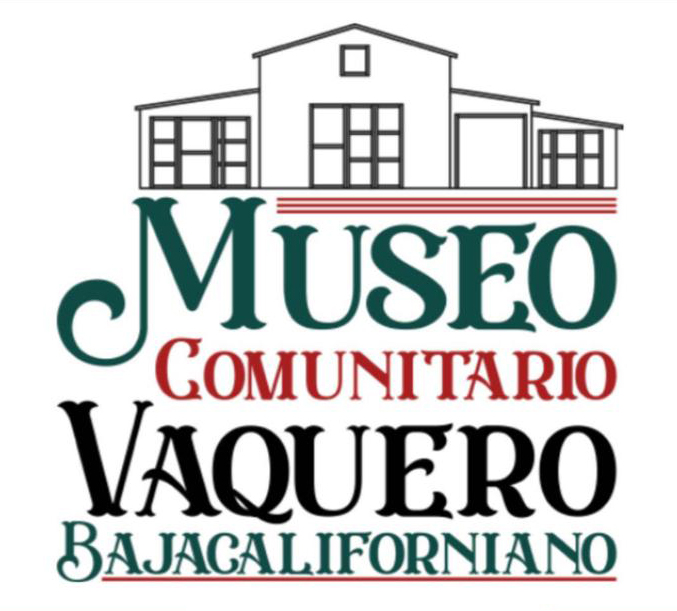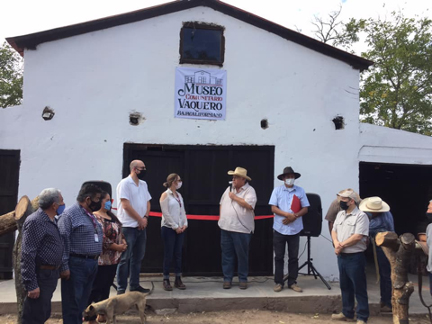|
 |
 Javier López (with microphone), president of Cueros de Venado Association and owner of Rancho Buenos Aires, speaks at the opening of Museo Comunitario Vaquero Baja Californiano in October 2020. Armando Estrada (in blue shirt, to right), historian and museum adviser, stands among local ranchers and officials. Photo by Gabriel Rivera Delgado |
Vaquero Museum Opens in Tijuana
By Maria E Curry
January/February 2021
Silver spurs and rusted farm tools, leather chaps and an old saddle restored with pumpkin soap and a toothbrush.
These and other historic rancho implements are on exhibit at the new Museo Comunitario Vaquero at Rancho Santo Domingo in Tijuana, in a valley 30 minutes southeast of the city via Boulevard 2000.
The vaquero tradition (horse-mounted herders), which is still alive in Santo Domingo, is the precursor to the American cowboy. The first vaqueros came to Baja California with Jesuit missionary Eusebio Kino in 1687. When the San Miguel Arcangel de la Frontera Dominican Mission was established in 1787, Indigenous converts became vaqueros, too. Some of the Mission's rancherías run by Indigenous vaqueros included Santo Domingo, San Jose de la Zorra, el Rosario, Vallecitos, and Cueros de Venado.
Although there were several Kumeyaay Indian rebellions, San Miguel mission survived with an economy based on raising cattle, goats, sheep, horses, and mules, plus agriculture. When the mission system ended in 1834, the land was divided into Baja California ranches. Today in Santo Domingo valley, vaqueros from these old families herd cattle and preserve their traditions.
Forty families led the three-year effort to create the museum and its donated collection of artifacts. Some of the people are descendants of Alta California pioneer families. A year ago, they started cleaning and fencing the old stagecoach road, Cueros de Venado. They rehabilitated a c. 200-year-old adobe house donated by the Gilbert family for the museum. (The Gilberts are related by marriage to the Machado family, whose 1840s adobe house is preserved in Old Town San Diego.) Another adobe house on the ranch needs restoration; two more stand next to Cueros de Venado and the Santo Domingo cemetery. These are the oldest houses in Tijuana.
Historian Armando Estrada, director of the Unidad Regional de Culturas Populares, has been the museum's project advisor. The community, with government support as part of the Ruta Ecoturistica, is developing the museum and ranch as an ecotourism project to improve the region's economy. It will include camping; mountain riding, walking trails and tours, folkloric music events, and arts and crafts production. The valley's natural beauty abounds with native plants and flowers, and water sources that attract Canada geese and other migrating birds.
The museum opening festivities on October 31, 2020 included a Day of the Dead celebration, horseback riding, cattle marking, traditional music, trekking, camping, and a ceremony devoted to cleaning the 18th-century Santo Domingo Cemetery.
See a 4-minute video about the museum and Rancho Santo Domingo. More information HERE.
|
2025
2024
2023
2022
2021
2020
2019
2018
2017
2016
2015
|





